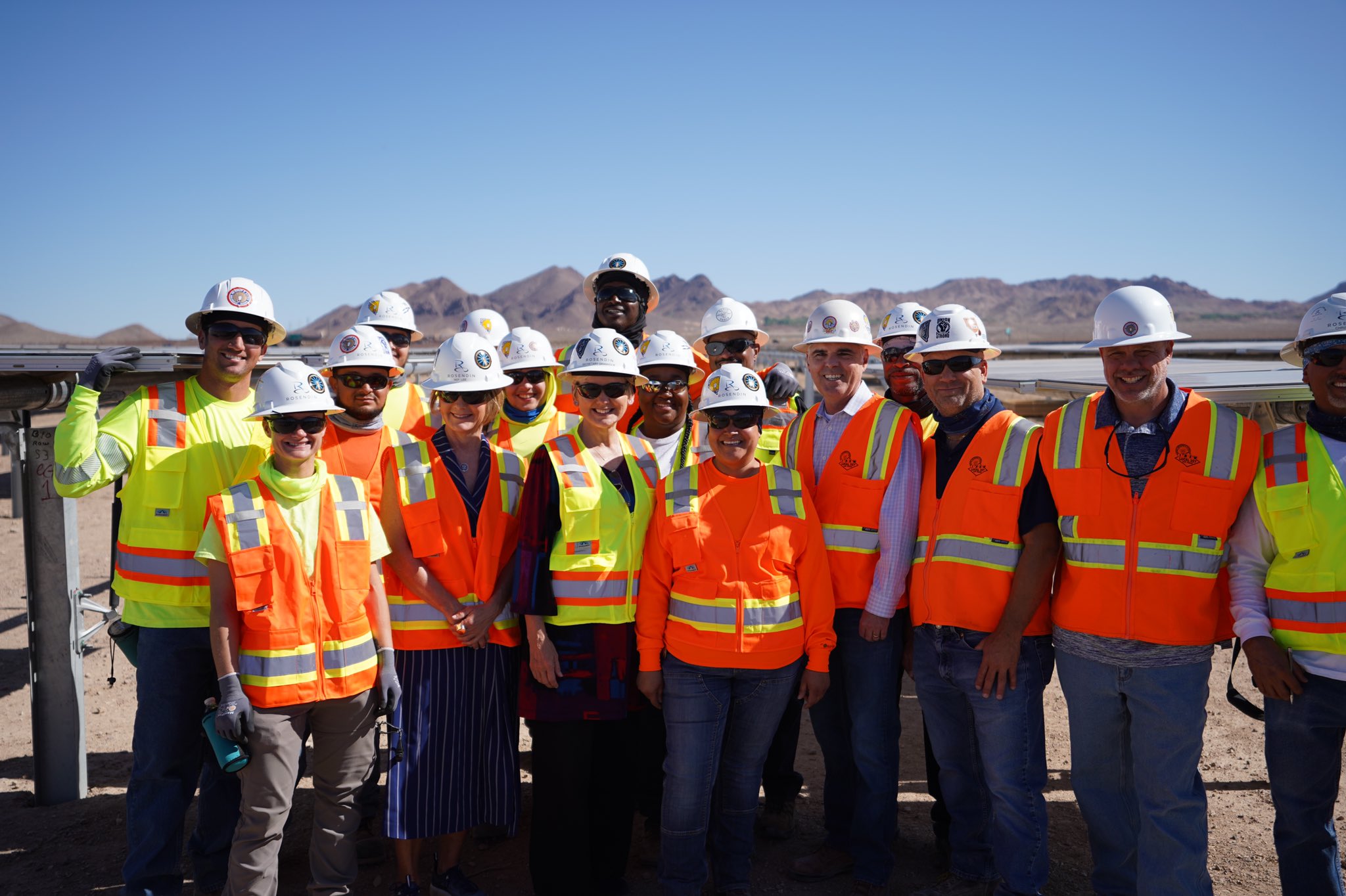6 Things You Should Know About the Energy Economy in 2023

The numbers are in from our annual United States Energy & Employment Report.
The report is a comprehensive summary of national and state-level workforce, industry, and hiring information by energy technology groups to better track employment within the key energy sectors. Empowered by this data, we’re able to better understand the growth and trends of the energy industry.
This year, we have a clear picture of the positive impact of President Biden’s Investing in America agenda.
Here are 6 key findings from the report:
1. Energy jobs are on the rise 📈
- The energy sector added nearly 300,000 jobs, increasing from 7.8 million total energy jobs in 2021 to over 8.1 million in 2022.
- Though the energy sector was deeply impacted by COVID-19 and its economic fallout, as of 2022, its recovered 71% of the jobs lost in 2020.
2. The energy industry is growing across all technologies ️ ⚡
- Some technologies with double digit growth include offshore wind (20%), other grid modernization (12%), hydrogen fuel cell vehicles (25%), natural gas vehicles (14%), and plug-in hybrid vehicles (10%).
- Employers across all technologies are optimistic about growth from 2022 to 2023.
️3. Clean energy technologies are making significant strides ☀️
- Clean energy electricity technologies, such as solar and wind, accounted for nearly 87% of net new electric power generation jobs, adding 22,279 jobs (+3.6%).
- Clean energy jobs increased in every state and grew 3.9% nationally from 2021 – 2022, outpacing overall U.S. employment, which increased 3.1%.
4. A cleaner way to drive is in our future 🚗 ⚡️
- Battery electric vehicles increased by 28,366 jobs (+27%) from 2021 to 2022, which was the fastest out of any energy technology.
- Clean vehicles accounted for 59% of all net new jobs in motor vehicles.
5. The future of the energy industry is for everyone 🙋♀️🙋
- The number of women working in energy increased by 150,000 (+7.8%), meaning that over half of the net jobs added in 2022 were held by women.
- A quarter of the energy workforce is non-white workers, which is slightly higher than their representation in the overall workforce (23%)
- Veterans made up 9% of the U.S. energy workforce, higher than their representation in the overall U.S. economy (5%).
6. Energy employers benefit from American unions 💪
- Union employers were more than twice as likely than non-union employers (46% and 22%, respectively), to offer or require a diversity and/or inclusion training program aimed at advocating workplace diversity and inclusion as well as more likely to report specific strategies, policies, or programs to increase the number of women, ethnic and racial minorities, and LGBTQ+ hires. In fact, the most unionized technology sector (Transmission, Distribution, and Storage), had the highest representation of non-white workers of the energy sectors in USEER.
- The percentage of workers represented by a union or covered under a project labor or collective bargaining agreement in the energy workforce (11%) was over 1.5 times the private sector average (7%).
- Union employers reported lower difficulty finding workers than non-union employers in 2022; 48% of non-union firms reported that it was “very difficult” to find workers, while only 29% of unionized firms reported difficulty. In the construction sector, this gap was even more pronounced.
Want to learn more about the energy economy today? Check out the full energy report here >>>

